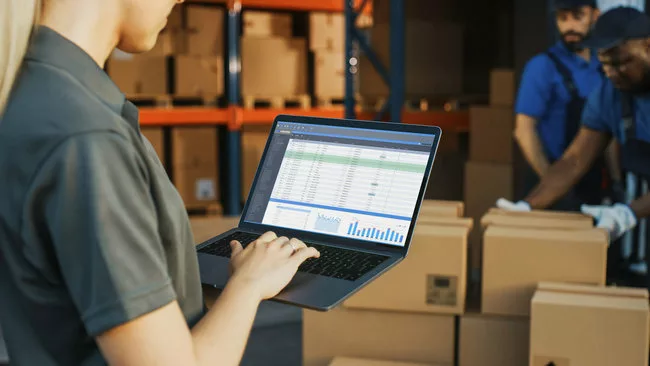Shipping from Korea to the USA can be complex, especially for those new to international shipping or those looking to optimize their supply chain. It is essential to understand the various factors involved, including the shipping methods available, costs, paperwork, and logistics management. Planning and executing shipments between these countries requires a good grasp of requirements and regulations to ensure cost-effective and timely delivery.

The shipping process between Korea and the USA is influenced by peak seasons, typically from mid-August to mid-October. During this time, shipping costs increase due to high demand and limited container space. Avoiding the peak season will result in more economical shipping choices. Furthermore, various shipping modes – such as sea FCL, sea LCL, air, or express – are options depending on your requirements and budget.
Whether you are exporting goods, importing raw materials, or managing an e-commerce business, successful shipping from Korea to the USA requires careful planning. By familiarizing yourself with the process and understanding critical factors, you can optimize shipping operations and avoid unnecessary delays or expenses.
Key Takeaways
- Understanding the shipping process between Korea and the USA is crucial for successful international trade.
- Choosing an appropriate shipping method and avoiding peak seasons can save on costs.
- Managing logistics and complying with regulations ensures a smooth shipping experience.
Choosing a Shipping Method
When shipping from South Korea to the United States, you have several options to choose from. This section will explore four main shipping methods: Express Shipping, Economy Shipping, Sea Freight, and Air Freight.

Express Shipping
Express shipping is the fastest option, providing door-to-door delivery for your parcels. This method is ideal for urgent shipments and valuable items. However, it is also the most expensive option, and you should weigh the cost against the urgency of the shipment.
Economy Shipping
Economy shipping is a slower but more affordable alternative to express shipping. It typically involves consolidated shipments, where your package is combined with others and shipped together. This method takes longer than express shipping but comes at a lower cost. It’s a good choice when you don’t have a strict deadline for your shipment and are looking for ways to save on shipping costs.
Sea Freight
Sea freight is an option for shipping larger shipments or when you’re looking for a more cost-effective solution. There are two main methods of sea freight:
- FCL (Full Container Load): The cargo is shipped in a separate container that you don’t have to share with others. This method is ideal for larger shipments that can fill an entire container.
- LCL (Less Than Container Load): Your cargo is combined with shipments from other customers in a shared container. LCL shipping is recommended for smaller shipments, as it allows you to pay only for the space you require within the container.
Air Freight
Air freight provides a faster shipping option than sea freight, making it suitable for time-sensitive shipments. Although it can be more expensive than sea freight for large-volume shipments, it might be a more cost-effective choice for small packages or when speed is crucial.
In conclusion, when choosing a shipping method from South Korea to the United States, it’s essential to consider factors such as the urgency and size of your shipment and the shipping costs associated with each method. You can select the most appropriate method for your needs by understanding the various available options.
Understanding Shipping Costs

Package Factors
When shipping from Korea to the USA, various factors affect your shipping costs, such as the size and weight of your package. Measuring these aspects accurately is essential to avoid any pricing discrepancies. Depending on the chosen shipping company, how they charge for size and package weight might vary. Some may offer flat-rate pricing options, while others follow a volumetric weight-based pricing method.
Shipping Rates
Shipping rates differ based on several factors, including the shipment’s origin and destination, the mode of transportation, and the speed at which you need your package delivered. Here’s a quick comparison of approximate shipping rates using standard courier service:
Average International Priority Shipping Costs:
| Package Weight | Shipping Cost |
| Up to 0.5 kg | $35 – $55 |
| 1 kg | $45 – $65 |
| 5 kg | $100 – $150 |
Remember that these are rough estimates and can vary significantly based on the specific circumstances of each shipment.
Insurance Details
In addition to shipping costs, it’s essential to consider package insurance. Insurance protects against loss or damage during transit and is often based on the declared value of the package. It is wise to insure high-value items, but be sure to factor in the additional costs for insurance. Remember that insurance options and pricing may vary among shipping companies, so research and compare before deciding.
Value and Taxes
When shipping internationally, it’s crucial to know the package’s declared value and potential taxes or duties upon entry into the destination country. The declared value of your shipment is used to determine any customs duties or taxes that may be applied. Be accurate when declaring your shipment’s value, as an incorrect declaration may result in penalties or delays. Furthermore, consider these potential costs when determining your overall shipping budget.
By understanding these factors, you can find the most cost-effective method for shipping your package from South Korea to the United States. Remember to research and compare different shipping companies, consider your shipment’s requirements, and accurately evaluate costs to make informed decisions.
Commercial Invoice Essentials
Preparing a commercial invoice accurately is crucial when shipping from South Korea to the USA. This document serves as a record of the transaction between the seller and the buyer, and it plays an essential role in the customs clearance process.
Firstly, include all the necessary information on the invoice, such as the total value, unit value, quantity, product description, and shipping details. Ensure all the information is accurate to avoid potential issues or delays in customs clearance.
Presenting an original invoice and two copies when submitting your shipping documents is also essential. These copies can be backup documentation if the original is misplaced or damaged during transit.
One vital aspect of a commercial invoice is the inclusion of the Terms of Sale (Incoterms). These terms establish the responsibilities of the buyer and seller in the shipping process, from the cost and risk distribution to where the goods are delivered. Make sure to specify the agreed-upon Incoterms on your commercial invoice.
A Certificate of Origin may also be necessary for specific products or trade agreements. Before the implementation of the KORUS FTA (Korea-US Free Trade Agreement), a Certificate of Origin in duplicate was required for some products. Check the regulations and requirements if your shipment falls under these categories.
A well-prepared commercial invoice is essential for successfully shipping goods from South Korea to the USA. Ensuring accurate and complete information facilitates a smoother customs clearance process and avoids potential issues or delays.
Dealing with Logistics

When shipping from South Korea to the USA, planning and organizing the logistics is essential for a smooth process. From selecting suitable locations and destinations to obtaining accurate freight quotes and understanding the major ports in South Korea, this section provides valuable information to help you make informed decisions.
Ports in South Korea
South Korea has several major ports, including Busan, Incheon, Kwangyang, and Pyeongtaek-Dangjin. Each port has different advantages and connects to various destinations in the USA. Researching, comparing, and selecting the most suitable port for your shipment can help you save time and money. Additionally, it’s essential to consider the transportation method, as this will determine the time taken for your shipment to arrive. For instance, air freight is faster, with 2-8 days transit time, while express shipping can take 1-4 days door-to-door.
Regarding location and destination, your shipping process begins with choosing the appropriate origin and destination points. The location in South Korea and the destination in the USA can impact shipping time and costs. For example, shipping cargo door-to-door could take up to 53 days, depending on your choice of ports in both countries. In comparison, air freight can take 2-8 days to reach its destination port in the USA.
Infographics for Shipping from Korea to the USA
Shipping Data from Korea to USA
When shipping goods from Korea to the USA, various factors, such as shipping method, product types, and relevant regulations, must be considered. Here, we provide an overview of essential aspects related to shipping clothing, tobacco, fabric, and more from Korea to the USA.
Remember that shipping timeframes may vary depending on the specific items being shipped.
Commodities:
Different products require specific handling, documentation, and regulations. Here, we look at some common goods shipped from Korea to the USA:
- Clothing: South Korea is a significant exporter of clothing and apparel to the United States. Pay attention to labeling requirements, fabric content, and Customs duties to ensure your garments arrive safely.
- Tobacco: Strict product labeling and packaging regulations apply when exporting tobacco products from Korea to the USA. Be sure to familiarize yourself with USA regulations for tobacco imports to avoid delays or penalties. We can provide information about these guidelines, when you contact us via the customer contact form on our website. Call us today.
- Fabric: As with clothing, importing fabrics from Korea to the USA is subject to Customs duties and labeling requirements. Additionally, keep in mind the relevant regulations for hazardous materials. For example, check approved guidelines to know prohibited items, and read updated reports to avoid shipping items that can be seized at the ports.
Using infographics when shipping from Korea to the USA can help provide a clear visual overview of the different steps, processes, and considerations when managing your imports. These tools will streamline your shipping experience and ensure you are fully informed about your product category.
Frequently Asked Questions

1. What is the average shipping time from Korea to the USA?
The average shipping time from Korea to the USA depends on your chosen shipping method. Typically, express shipping options can deliver your package within 3-5 business days, while standard shipping can take 1-3 weeks. However, these estimates can vary depending on factors like customs clearance and the specific locations where the package is being sent and received.
2. What are the costs of shipping a package from Korea to the USA?
Shipping costs from Korea to the USA depend on factors such as the weight and dimensions of your package, the shipping method selected, and any additional services you might require, such as insurance or tracking. Sometimes, shipping a small package via Korea Post can cost around $20. However, the cost will be higher if you ship more oversized items or use a freight service. Getting a quote from multiple shipping providers is always a good idea to find the most cost-effective option for your needs.
3. Are there any current delays in shipping from Korea?
Various factors can influence shipping delays, including customs processes, inclement weather, seasonal demand, and worldwide crises like pandemics. While there may not be pervasive delays at the moment, it’s essential to check for any transportation updates or news relevant to the current situation when planning your shipment. To stay informed about your package’s progress, consider opting for a shipping method that includes tracking and delivery notifications.
Hire Us Today

Use our excellent services to ship from Korea to USA today. Our team works hard to ensure all our clients are satisfied. Also, we meet deadlines, so you can rely on us. Please send us a message via the customer contact form on our website to get started.
